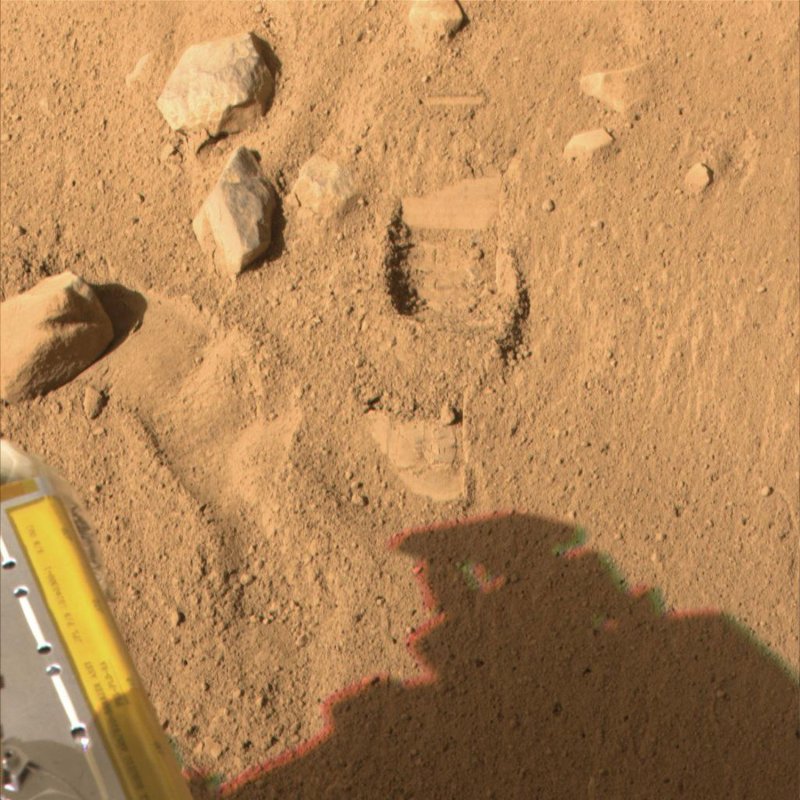PASADENA, Calif., June 3 (UPI) -- One week after landing on Mars, the U.S. space agency's Phoenix spacecraft has lifted its first scoop of Martian soil as a test of the lander's robotic arm.
The National Aeronautics and Space Administration said the Monday practice scoop was emptied onto the ground after a robotic arm camera photographed the soil inside the scoop. The Phoenix control team said it plans to have the arm deliver its next scoopful later this week to an instrument that heats and sniffs the sample to identify ingredients.















